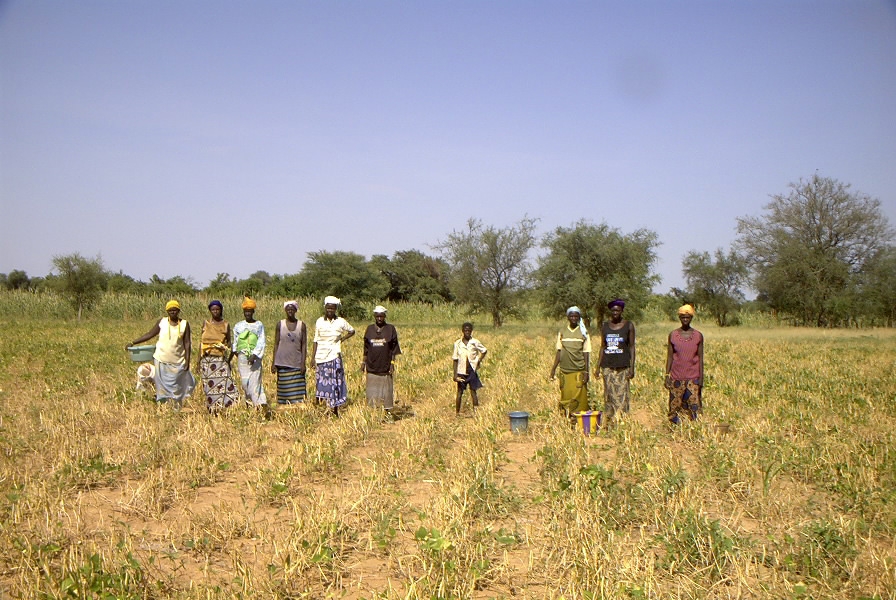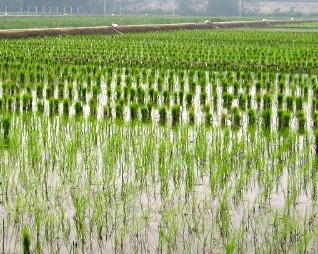Wheat Research Initiative launched in China
- Published Date
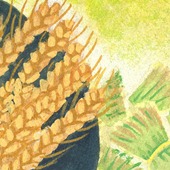
E-booklet version, with downloadable PDF
BEIJING, CHINA – Following the India launch, the next stop was Beijing, China, where the wheat RI launch meeting from 25–27 February 2010, was hosted by the Chinese Academy of Agricultural Sciences (CAAS).
Like ICAR in India, CAAS is a founding GCP Consortium member. “China has been a good GCP partner and friend right from the Programme’s beginnings, and the country has an impressive team of scientists,” observed Dr Ribaut. “There’s absolutely no doubt that this good relationship will be strengthened further.”
 In his welcoming remarks, Dr Tang Huajan (pictured left), Vice-President, CAAS, observed that the launch meeting was in the festive season of the Chinese new year. “This is the Year of the Tiger, so there are indeed even stronger collaborations ahead,” he said.
In his welcoming remarks, Dr Tang Huajan (pictured left), Vice-President, CAAS, observed that the launch meeting was in the festive season of the Chinese new year. “This is the Year of the Tiger, so there are indeed even stronger collaborations ahead,” he said.
Food first
With a population of 1.4 billion projected to rise to 1.6 billion within the next two decades, providing adequate quality food to the population is very high on China’s agenda. Noting that CAAS is keenly pursuing international collaborations in agriculture, Dr Tang said CAAS has memoranda of understanding (MoUs) with most of the CGIAR Centres and hosts seven on its campus. A vast number of Chinese scientists have also been trained at and by CG Centres, and this has greatly benefited the country. For instance, as the first step in this new project, researchers in the Chinese wheat RI underwent training in phenotyping in late 2009 at CIMMYT. The next step will be for the trainees to formulate phenotyping protocols, by adapting those already designed by the wheat RI team in India.
China and GCP are also united by another common priority: “Drought affects many crops in China,” said Dr Tang (pictured left). Southwest China is currently afflicted by drought, affecting a population of 15m people. In Northern China which is a maize- and wheat-growing area, drought is a problem. Drought-tolerant crops are therefore important to guarantee productivity and also improve quality.” He added that China was pleased to join hands with international partners to address productivity under drought.
The purpose of the meeting was to share experiences and report on progress in solving the problems that will lead to better varieties to improve wheat production.
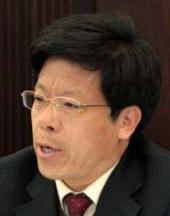 In his opening remarks, Dr Wang Shumin (pictured right) Deputy Director General of the Institute of Crop Science, CAAS, revealed that 60 percent of the institute’s scientists work on wheat. This, he said, reflects the importance of wheat in China, and further underscores why research on wheat water-use efficiency and drought tolerance is a priority. He also observed that collaboration with CGIAR institutes had increased as a result of engagement with GCP, citing ICARDA as an example.
In his opening remarks, Dr Wang Shumin (pictured right) Deputy Director General of the Institute of Crop Science, CAAS, revealed that 60 percent of the institute’s scientists work on wheat. This, he said, reflects the importance of wheat in China, and further underscores why research on wheat water-use efficiency and drought tolerance is a priority. He also observed that collaboration with CGIAR institutes had increased as a result of engagement with GCP, citing ICARDA as an example.
Walking the talk – China leads
In Phase I, GCP’s interaction with China was more limited and at micro or project level, mostly on germplasm characterisation and exchange, and with project leadership by the CGIAR and developed-country partners. Phase II will be focused on broader, macro, large-impact issues, and will also see a fundamental shift in partner roles. “We want developing countries to take the lead in Phase II, with the CGIAR Centres and partners in developed countries supporting the work as mentors,” said Dr Ribaut.
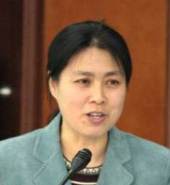 The Chinese wheat RI is led by Dr Ruilian Jing (pictured left) of CAAS. All in all, six institutes are working on this initiative. Four are in China: CAAS (incorporating the Institute of Crop Science and National Key Facility for Crop Gene Resources and Genetic Improvement), the Hebei Academy of Agricultural Sciences (HAAS), Shanxi Academy of Agricultural Sciences (SAAS) and the Xinjiang Academy of Agricultural Sciences (XAAS), with the Plant Breeding Institute of the University of Sydney, Australia and CIMMYT in a mentoring and support role. CAAS is also investing both funds and in-kind contributions to this initiative. Several postgraduate students who will be working on the project also attended the meeting. Altogether, CAAS has about 3,000 postgraduate students.
The Chinese wheat RI is led by Dr Ruilian Jing (pictured left) of CAAS. All in all, six institutes are working on this initiative. Four are in China: CAAS (incorporating the Institute of Crop Science and National Key Facility for Crop Gene Resources and Genetic Improvement), the Hebei Academy of Agricultural Sciences (HAAS), Shanxi Academy of Agricultural Sciences (SAAS) and the Xinjiang Academy of Agricultural Sciences (XAAS), with the Plant Breeding Institute of the University of Sydney, Australia and CIMMYT in a mentoring and support role. CAAS is also investing both funds and in-kind contributions to this initiative. Several postgraduate students who will be working on the project also attended the meeting. Altogether, CAAS has about 3,000 postgraduate students.
At the close of the meeting, Dr Carmen de Vicente, GCP’s Leader for Capacity building and enabling delivery, expressed GCP’s confidence in the Chinese team: “This is the right project, in the right place with the right people. The project is in good hands. It is particularly encouraging to see the strong institutional support from the Chinese government.” The team includes several distinguished scientists who in December 2009 received the National Science and Technology Progress Award from the Chinese government in recognition of their work on germplasm enhancement, breeding and application of winter wheat with drought resistance and high water-use efficiency in northern China. The award was to – among others – Ruilian Jing, Meirong Sun, Xiumin Chen and Pingxiao Chang.
Dr de Vicente stressed GCP’s role as a project partner, and not simply a funder, “We are committed to see this project succeed, and GCP will provide all the necessary technical backstopping, support, tools and guidance.”
Bringing the 'Top Two' together and banking in the future
Reiterating the importance of the wheat in Asia Research Initiative, Dr Ribaut noted that the wheat RI was the flagship of GCP’s RI approach, given the population in India and China, the capacity and infrastructure in both nations, and therefore the great impact the work would have, especially with the ‘Big Two’ in Asia working together as envisioned for the project. However, he was quick to add that GCP’s RI approach is not about large impacts in the short term. Rather, what GCP hopes to demonstrate is definitive proof-of-concept of the power of molecular breeding to increase crop productivity, thereby improving food security. Other agencies can then upscale and outscale the proven concept at the national, or even at the regional level.
In his concluding remarks, Dr Ribaut stressed the critical importance of germplasm exchange and good data management, and reminded participants to use the IBP, whose clients will include all the seven RIs. “This is your platform,” he emphasised. The project’s genotyping and data management components will be conducted through the IBP.
"...Go!"
The project timelines and milestones will be adjusted based on consultations during the launch meetings. “Now we all know and understand what we need to do. Let’s go out and do it!” concluded Dr Trethowan.
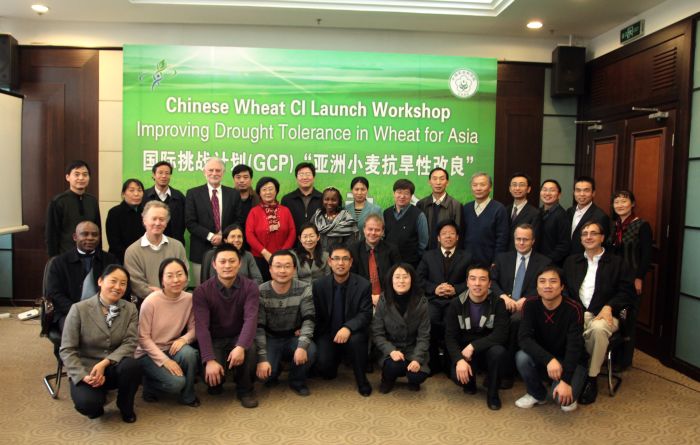
Participants at the China wheat RI launch meeting:
Back row (from left to right): Chai Yongfeng, Li Xiurong, Chen Xinmin, Larry Bulter, Qiao Wenchen, Chen Xiumin, Li Kejiang, Antonia Okono, Jing Ruilian, He Zhonghu, Sun Meirong, Wu Zhenlu, Han Nanping, Mao xinguo, Zhang Yueqiang and Chang Xiaoping
Middle row (from left to right): Francis Ogbonnaya, Peter Langridge, Carmen de Vicente, Feng Dongxin, Jean-Marcel Ribaut, Wang Shumin, Xavier Delannay and Richard Trethowan
Front row (from left to right): Zhang Junling, Li Ang, Shi Wei, Wang Zhenghang, Wang Zhilan, Liu Xiulin and Chang Jianzhong
For more information, see:
A platform on the move
- Published Date
At half-a-year old, GCP’s Molecular Breeding (MBP) is off to a good start, as project teams meet to track progress and jointly map next steps
 “We have learnt a lot and grown as a community. The next steps to develop and deploy the Molecular Breeding Platform are clear and the project team is primed to take them.”This was the sum-up and affirmation from Dr Graham McLaren, MBP Coordinator, at the end of a four-day workshop to officially launch the MBP. The workshop was held 17–20 February 2010 in Hyderabad, India, hosted by the International Crops Research Institute in the Semi-arid Tropics (ICRISAT).
“We have learnt a lot and grown as a community. The next steps to develop and deploy the Molecular Breeding Platform are clear and the project team is primed to take them.”This was the sum-up and affirmation from Dr Graham McLaren, MBP Coordinator, at the end of a four-day workshop to officially launch the MBP. The workshop was held 17–20 February 2010 in Hyderabad, India, hosted by the International Crops Research Institute in the Semi-arid Tropics (ICRISAT).
The MBP was initiated in September 2009. It is an initiative of the Generation Challenge Programme (GCP) of the Consultative Group on International Agricultural Research (CGIAR) and is funded by the Bill & Melinda Gates Foundation, with additional financial support from the UK Department for International Development (DFID) and the European Commission. The MBP is a broad initiative that is not exclusively limited to molecular breeding: the platform will blend molecular breeding and phenotypic selection as appropriate to serve breeding goals (for more on the MBP’s background, see links at the end of this article).
The road travelled, and the road ahead
Planning for the Molecular Breeding Platform first started in 2007. Throughout the MBP’s two-year incubation and into its early months, this steadfast and constructive dialogue has continued through face-to-face meetings and virtual interactions. MBP project teams first met in Montpellier, France, in March 2009, to design the initiative. This Hyderabad workshop in February 2010 was the team’s second face-to-face meeting. They re-examined the steps to realise the MBP’s vision, assessed progress in the first six months, and adjusted course as necessary following the consultations. And they drew inspiration from one another. Specific objectives were to clarify expectations of all stakeholders in the MBP, review the current status of services and applications, and to verify workplans for platform developers.
“We’ve had a steady build-up, and we’re now approaching consensus after broad discussions with stakeholders,” noted Dr McLaren.
The MBP project unites three main groups: plant breeders, the developers of tools that breeders need and service providers for breeding programmes. “The MBP is a right step in enhancing collective action between and amongst CGIAR Centres and their partners, and with stakeholders,” said Dr William Dar, ICRISAT’s Director General. ICRISAT is a central MBP partner.
Dr David Bergvinson, Senior Programme Officer at the Bill & Melinda Gates Foundation observed that molecular breeding can succeed in the public sector, especially by partnering with the private sector, as well as with small and medium-scale enterprises. “The idea is to level the playing field so developing countries can benefit from molecular breeding without having to make large capital investments,” he said. “Service providers will be critical in providing information and tools that will allow breeders to develop better varieties in a shorter period of time, which will eventually increase productivity for small farmers.” Some of these service providers are in the developing world and the public sector, such as Biosciences Eastern and Central Africa (BecA), based in Nairobi, Kenya.
Data, diversity and technology
Data management and access is one of the platform’s cornerstones. Although a challenge, good data management creates the opportunity to leverage and mine the wealth of knowledge data hold.
The project brings together broad diversity in many areas – not only in crops, but also within and across project teams, with different people having different expectations. As such, it is critical that the project remain focused and deliver practical tools, and also that users and developers maintain continuous dialogue.
There is a tremendous upsurge in agricultural development and the technology is now available to design tools to spur revolutions in agriculture to which the MBP can contribute, to address current and future food security needs. Nevertheless, the MBP is not driven by technology but rather by providing practical solutions for breeders. The idea is not to design – or wait for – the perfect product or tool: the MBP is reality-based, services ongoing projects, and proceeds by using the best of the technology and tools available now.
Dr Dave Hoisington, Deputy Director General (Research) at ICRISAT, committed to continue to encourage breeders to take advantage of the platform and the tools it offers. However, he also observed that for breeders to use these tools, they need the support of science managers.
What next?
To ensure focus, the MBP will primarily first prioritise the pre-selected breeding projects, termed ‘use cases’. There are now 14 pioneer use cases, up from 10 at the project’s initiation in September 2009. The seven GCP research Challenge Initiatives (CIs) will also be served by the platform. Wheat in Asia is one of the CIs, and the MBP launch meeting was immediately followed by the launch of the wheat CI, first in India (22–23 February), and then in China (25–26 February).
All in all, the MBP meeting closed on an optimistic and inspiring note. It was clear that there would be challenges ahead, but the limitations had been recognised and were not insurmountable, especially given the commitment, dedication and energy of the MBP project teams. The MBP conversations will therefore continue, well after Hyderabad.
Relevant links
- MBP website
- Press release at MBP’s initiation, September 2009 (background on the project)
- MBP launch workshop, February 2010 (including presentations and reports)
Tackling a tricky topic: Drought phenotyping
- Published Date
From 28–30 January 2008, GCP lived up to its middle name and organised a workshop on an intricate challenge—drought phenotyping. Held at GCP’s Headquarters at CIMMYT, the workshop brought together specialists from diverse disciplines such as crop physiologists, GIS specialists and model developers, to more effectively address the increasing phenotyping needs from genomic studies and breeding programmes, through an interdisciplinary lens.
Participants in the workshop were Gregory Edmeades (Consultant), Abraham Blum (Consultant), Glenn Hyman (CIAT), Sam Geerts (Gent University, Belgium), Robert Koebner (Consultant), Paul Brennan (Consultant), Reinaldo Gomide (EMBRAPA), John O’Toole (Consultant), Guy Davenport (CRIL-CIMMYT), Rosemary Shrestha (CRIL-CIMMYT), Eduardo Hernández (CRIL-CIMMYT), Humberto Gómez (Genotyping Support Service Coordinator, GCP), Jean-Marcel Ribaut (Director, GCP) and Philippe Monneveux (Subprogramme 3 Leader, GCP).
Participants discussed several options for tackling the complexity of drought phenotyping in GCP projects, mainly centering on:
- better characterisation of environmental conditions and capacities in experimental stations involved in GCP drought phenotyping, and selecting potential hubs, based on climatic representativeness and existing facilities and expertise (component 1)
- improving environmental characterisation, based on GIS, water balance models and their combination (component 2)
- improving phenotypic data collection by customising templates and improving data capture (component 3)
- Common activities were agreed upon by the participants who developed a workplan to be further refined and implemented over the months to follow.
Expected outputs from the actions proposed at the workshop include:
Component 1:
- Identify sites and develop a phenotyping network comprising 10–12 hubs (reliable and homogenous sites, and with the capacity for drought phenotyping of at least two crops). Sites will be identified through on-site visits to Latin America, South and Southeast Asia, and sub-Saharan Africa, along with a detailed list of their characteristics, suitability for specific crops, equipment and personnel needs.
- Identifying 3–8 candidate local phenotyping sites per crop, each hosted by a national research programme, as well as conducting commensurate needs assessments.
Component 2:
- Geographic and agro-climatic appraisals to support the selection of hub sites, including attributing information using spatial overlay analysis with geographic information system (GIS) software. Soil constraint mapping will also be conducted using tables, graphs, maps and software, and outputs disseminated through CDs to other teams working on establishing phenotyping networks
- Characterisation of selected hubs to ensure adequate representaiton and future field trial planning (map homologues using Homologue and CLIMEX software to identify environments similar to the site; characterisation of drought stress for the site using the soil water balance model Budget).
- Understanding relationships between test sites for improved deployment of GCP genotypes (measures of similarity and dissimilarity among locations, grouping of locations to support future decisions on deployment of GCP materials, calculation of drought stress indicators, establishment of broad area maps of water balance and detailed mapping of drought stress in GCP priority areas).
Component 3:
- Development and implementation of phenotyping templates to ensure that all the required information for projects is housed not only in the GCP Central Registry, but also in a database which will allow data set cross-searches for meta analyses and other comparative data mining.
- Production of a help manual as a companion to the phenotyping template to ensure that project partners are fully aware of expectations on phenotyping data before they embark on data collection.
- Compliance monitoring of data storage to ensure that data have been submitted in an acceptable and complete form.
- Development and implementation of electronic data capture technology (after understanding and documenting the availability of compatible hardware and software, and assuring a sufficient level of user computer literacy).
Energy levels at the end of the workshop were high, with several participants commenting that the event came as a welcomed opportunity to interact with colleagues and more easily exchange ideas on the complex issue of drought phenotyping. The outlook for the steps ahead and the future network was also positive, as captured by GIS specialist Glenn Hymann: “The phenotyping network and all the work that will be carried out in the network sites is where we will really see how the wonders of genetics and bioinformatics research play themselves out on the ground. So, in the coming years it well be exciting to see the results of GCP research in the crop plants”.
For further information on this workshop, please contact Subprogramme 3 Leader This email address is being protected from spambots. You need JavaScript enabled to view it. .
Plotting a roadmap towards molecular breeding in the developing world
- Published Date

MONTPELLIER, FRANCE – A workshop was held in Montpellier, France on March 5–7 2009 to discuss the concept and design of a user-sensitive Molecular Breeding Platform (MBP) with the potential users (breeders); to share plans between users, developers potential service providers for breeding; and to obtain breeder insights and input on how to design this platform to best fit and meet their needs.
The idea of the MBP has been conceived by the Generation Challenge Programme (GCP) of the Consultative Group on International Agricultural Research (CGIAR) and partners. GCP’s MBP will address this problem by providing a one-stop-shop with centralised and functional access to modern breeding technologies, data management and analysis tools, and valuable breeding material. Related information, as well as comprehensive tools and services, will be accessible through an Internet portal and helpdesk, which will in turn promote the building of breeding communities, particularly for developing countries, irrespective of their geographical location or institutional affiliation.
Niaba Teme, a sorghum breeder at the L’Institut d’économie rurale, Mali, plans to use molecular markers and marker-assisted selection to identify traits and expand the base of local germplasm. “This project will speed up my work,” he remarks. “With conventional breeding and biparental breeding, I can observe the plant phenotype without however knowing its genetic makeup. But with molecular breeding, I can now start with the genetic makeup to identify the desired crop trait, and then conduct crosses for traits such as yield, grain quality, aluminium tolerance or rapid maturity. Plus, there is no risk of error of judgement. With observation, it is sometimes difficult to distinguish genetic and environmental influences. Molecular breeding can greatly enhance and accelerate conventional breeding.”
Paul Kimurto of the Department of Crops and Soil Science, Egerton University, Kenya, concurs on the speed and efficiency of molecular breeding. He adds, “The services aspects of the platform are very attractive. Access to markers, germplasm and molecular analaysis germplasm systems is a constraint for most breeding programmes. Therefore, standardised technology and specialised services through contracted labs, where all the administrative and logistic details as well as negotiations with suppliers are all taken care of would be a big step ahead. It is a brilliant concept whose time has come. But the service team must be top-notch and truly perform. A breeder’s calendar is controlled by time and tide and they cannot afford to miss a cropping season.”
Commenting on the goal of food security, Dr Vanessa Cook, a plant breeder and project leader at Monsanto says, “There is no single solution to achieve food security. It requires more tools and more people working together across the public and the private sector.”
No doubt, the scope of this project, its broad partnerships and its goals are ambitious, but not impossible. It is for this reason that Dr Cook observes, “There are some tough conversations ahead!”
• MBP Planning workshop summary report
• For more information on the Molecular Breeding Platform, please contact This email address is being protected from spambots. You need JavaScript enabled to view it. , the MBP coordinator.
Strengthening the foundations of a nascent network: GCP collaborators gather for a workshop on products management and delivery in GCP rice research in Asia (Bangkok, Thailand, 6 and 8 November 2007)
- Published Date
For two days in November 2007 selected collaborators of GCP projects on rice in Asia came together for a Subprogramme 3—Subprogramme 5-organised workshop on Products management and delivery in GCP rice research in Asia. The workshop was held on 6th and 8th November in the frame of the 6th Asian Crop Science Association Conference and the 2nd International Conference on Rice for the Future, organised by BioAsia in Bangkok, Thailand.
Taking advantage of the location and high presence of GCP partners due to attend the 2007 ‘BioAsia’ event, the opportunity to gather key National Research Systems and Principal Investigators working on GCP rice projects in Asia was too great to miss. The workshop, coordinated by GCP SP5 Leader Carmen de Vicente and SP3 Leader Philippe de Monneveux, and attended by 24 participants hailing from nine countries in Asia, opened with an introduction to the concept of Product Management and Delivery in GCP, followed by an open discussion. Teams presented ongoing activities of their GCP rice projects in Asia, laying particular emphasis on already available or soon-to-be available products, product validation plans and product transfer proposals. Products listed were numerous and varied, including, among others, populations, germplasm, molecular markers and protocols and methods.
Day two of the event saw some lively and animated discussions, focusing mainly on the analysis of user interests, needs and constraints. User demands revealed a wide array of interests. The Subprogramme 2-funded Competitive project G3005.02: Revitalising marginal lands: Discovery of genes for tolerance of saline and phosphorus deficient soils to enhance and sustain productivity, led by IRRI’s Ismail Abdelbagi, induced various requests from GCP partners, including, among others, a need for salinity-tolerant germplasm and access to phenotyping facilities from Myanmar, P-deficiency tolerant germplasm from Thailand and Bangalore, India, and P-deficiency tolerant markers from Indonesia. Similarly, the SP3-supported Commissioned project G4005.18: Development of low-cost gene-based trait assay technologies in cereals, also led by IRRI, generated demands from Laos and Myanmar for MAS training and resistant germplasm, as well as for blast markers from Bangladesh and Thailand, SNPs and RILs from Bangalore, India, and MAS technologies from Tamil Nadu, India. All Mekong countries expressed a strong desire for cooking quality (glutinous) and for submergence tolerance and blast.
One key result of the debates was the identification of common constraints between projects, as well as common activities that might serve to complement other teams’ projects. Consequently, synergies within the GCP rice Asian community were identified, and informal links between projects created. For SP5 Leader Carmen de Vicente, the most rewarding element of the event was evident: “The chance for so many developing country partners to come together and exchange ideas is rare”, she explains. “In providing such an array of partners with a forum to share experiences and information, we witnessed a real consolidation of a network. Participants present were clearly open to change and recognised that what’s useful for one group can also be helpful to another. Our community of users is expanding, and with it, so will the use of our products and resources”.
Reflecting on the successful outcomes and potential future impact of the meeting, and recognising the need to help fasten the ties amongst this nascent Asian network, GCP is now considering the possibility of introducing a coordinator figure to the enthusiastic team. Through regular interaction with the various players, the assigned coordinator would play a central role in identifying the product developments and user needs of the GCP rice community in Asia, ensuring that voices are heard and that the necessary support is delivered effectively and efficiently.
Whilst GCP will monitor the progress of the community and will remain actively involved in supporting and encouraging the ongoing activities, the idea, as highlighted by de Vicente, is that the network will eventually become strong enough to go it alone: “Right now”, she explains, “our role is to support, animate and activate the network. As time goes on though, our expectation is that the foundation will become solid enough to continue without our support, acting, instead, as an all-essential avenue for sustaining GCP research, even after the day when GCP, as a time-bound, 10 year-long programme, ceases to exist”.
The Rice in Asia network can be considered as the first in a series of GCP Crop and Regional Platforms which are set to develop over the coming months. More information on these platforms will be made available in due course.
Presentations and other supporting documents from the workshop are available on Slideshare.

